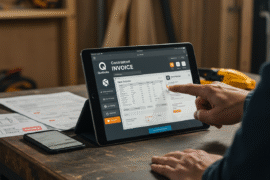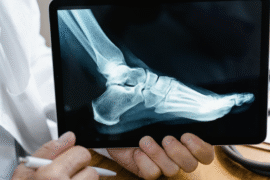This article may contain references to products or services from one or more of our advertisers or partners. We may receive compensation when you click on links to those products or services. Nonetheless, our opinions are our own.
The information presented in this article is accurate to the best of our knowledge at the time of publication. However, information is subject to change, and no guarantees are made about the continued accuracy or completeness of this content after its publication date.
- Introduction
- Stimulus Checks in the United States
- What Stimulus Checks Covered and Why They Were Issued
- Types of Federal Payments Given
- Legal Criteria for Stimulus Eligibility
- Status and SSN Requirements
- Income Limits and Filing Status
- Special Situations and Exceptions
- Conclusion
- Frequently Asked Questions
- Can I claim a missed stimulus payment on my tax return?
- Will receiving a stimulus check affect my immigration status?
- What should I do if my payment was sent to the wrong address or account?
- Are non-filers or those with no income eligible for stimulus checks?
- How can I check the status of my stimulus payment?
- Recommended Reads
Introduction
Stimulus checks gave quick money help to many people in the US during the COVID-19 crisis. The federal government sent out these payments in three different rounds with different laws. The money was there to help people and families who lost jobs, had less work, or had higher bills.
It is good to know the rules about who can get a payment like this. There are people who did not get one, and some may not know if they should get it. This guide will help you know what you need for the payment, the exceptions, and what steps to take if you did not get your money. You will find out how these payments were sent, who got them, and what the law in the U.S. says about this.
Stimulus Checks in the United States
According to the Internal Revenue Service, dated April 2022, the 2021 Recovery Rebate Credit may still be claimed by people who missed the full third stimulus payment. Even those who usually don’t file taxes were allowed to submit a 2021 tax return to qualify. A valid Social Security number was required for the filer, their spouse, or dependents. Special rules were also created so that mixed-status families and military couples could receive the payment if at least one person had a valid SSN.
What Stimulus Checks Covered and Why They Were Issued
Stimulus payments were given to people in the United States to help with money problems that started because of COVID-19. The government made laws like the CARES Act to start these payments. The goal was to keep the economy strong and to help families pay for what they needed as prices got higher during this time.
You had to meet some rules to be eligible. These rules were about your legal status, how much money you have, and your old tax returns. Each time there was a payment round, the amount you could get and the rules to get it were not the same.
- First round (CARES Act): In the first round, each adult got $1,200. Each child who qualified got $500.
- Second round: In the second round, each adult got $600 and each dependent got $600.
- Third round (American Rescue Plan): For the third round, each person got $1,400. Every dependent, even if they are an adult, got $1,400 as well.
These payments were given to help people with money. How much you get depends on what you earn and how many people are in your family. After that, more people with bigger families could get this help too.
Types of Federal Payments Given
| Payment Type | Maximum Amount Allocated | Eligibility Adjustments |
|---|---|---|
| First Stimulus Check | $1,200 per adult + $500 per dependent | Strict SSN requirements for dependents |
| Second Stimulus Check | $600 per adult + $600 per dependent | Lower AGI phase-out thresholds |
| Third Stimulus Check | $1,400 per adult + $1,400 for all dependents | Expanded dependent eligibility (including adults) |
Each round added new rules that tried to help more people. The goal was to fix any coverage gaps that there were before. These changes were made so individuals would not miss out and could get the help they need.
Voted "Best Overall Budgeting App" by Forbes and WSJ
Monarch Money helps you budget, track spending, set goals, and plan your financial future—all in one app.
Get 50% OFF your first year with code MONARCHVIP
Legal Criteria for Stimulus Eligibility
To get the stimulus payments, people had to follow the rules made by the IRS.
- You have to be a U.S. citizen, live in the U.S. with the right papers, or be a resident who meets all the needed rules.
- You need to have a good Social Security number (SSN).
- Your money needs to be within set limits based on your Adjusted Gross Income (AGI).
For people who do not usually do a tax return, the IRS made online portals. You can use these to sign up for payments. Mixed-status families and people with ITINs often have rules that make it hard to get payments. Still, some can get help in some cases or by using tax credits.
Status and SSN Requirements
You had to have the right legal status and a tax ID to be eligible.
- U.S. citizens and people who are legal residents who have a real SSN could get it.
- Resident aliens needed to pass the big presence test to get it.
- A real SSN was needed for every person who would get it and most dependents.
At first, mixed-status families did not get the payment if one spouse used an ITIN to file taxes. This changed in the third round. Now, if at least one spouse has a real SSN, the family can get help.
Military families had some different rules. If one person was serving in the Armed Forces, the other person did not need to follow the usual SSN rule. But, if people had only an ITIN, they could not get it then. They could get it later if they gave the new details to claim Recovery Rebate Credits after that.
Income Limits and Filing Status
| Filing Status | Full Payment Up To | Phase-Out Ends At |
|---|---|---|
| Single | $75,000 | $99,000 |
| Head of Household | $112,500 | $136,500 |
| Married Filing Jointly | $150,000 | $198,000 |
The amount you get can go up or down. This is based on your filing status and the number of dependents you have. For example, if you file as the head of household, you may get more because the limits are higher. There are also different rules about who counts as a dependent. If you got the wrong amount because your tax info is not up to date, you can fix it. You can change your tax return or file for more credits to get what you should get.
Special Situations and Exceptions
Mixed-Status Families and Dependents
Households that have people with different immigration or tax statuses have extra rules they have to follow. Here are the main things to know:
- Only dependents who have a real SSN or ATIN can get the payment.
- For the first two rounds, both people who file together need SSNs, unless one of them is in active-duty military service.
- The third round changed this rule. It lets families get payment even if only one spouse follows the rules.
- People who did not get all their payments the first time can use the IRS Recovery Rebate Credit. This helps them claim the money at a different time.
Immigration Status and ITIN Use
The IRS said you need to have a real SSN if you want to get it. People who only had ITINs could not get it. However:
- People who have a green card, DACA, or are in the country on TPS with an SSN could get payments.
- H-1B visa holders and family members with H-4 visas could also get payments if they have an SSN.
- People who filed taxes with an ITIN cannot get payments. But they could check about the Recovery Rebate Credit if their situation changes.
Many people with an ITIN did not get the first payments. But tax changes let some people get their benefits at a different time.
Conclusion
Knowing if you can get a stimulus check is very important when you need help with money in the U.S. These payments were made to help people and those who could live in the country during a big money problem. To get this money, you had to follow some rules. These rules were about how much you earn, if you are a citizen, and if you have a Social Security number. The rules decided who could get the money and how much people could receive.
Special rules were made for mixed-status families and for people who did not have a normal filing history. If you feel that you did not get a payment or you were left out by mistake, you can use the IRS Recovery Rebate Credit. This lets you get the money that you should have.
Keeping up with changes in the legal system and new tax rules can help people take care of their money. It also lets them get help that is there for them.
Frequently Asked Questions
Can I claim a missed stimulus payment on my tax return?
Yes. If you did not get a stimulus payment, you can still get it with the IRS Recovery Rebate Credit. You need to do a tax return for that year, or you can update your old tax filing.
Will receiving a stimulus check affect my immigration status?
No. Stimulus payments are tax credits. Immigration law does not count these as public benefits. Getting one will not change your green card chances. It also will not change any public charge choices.
What should I do if my payment was sent to the wrong address or account?
Get in touch with the IRS right away. Go to the IRS website. Use the “Get My Payment” tool to check the status of your payment. You can also update your address or bank information when you are there. The bank can help you get your money too.
Are non-filers or those with no income eligible for stimulus checks?
Yes. People who do not have any income or did not file taxes can still get it if they follow other rules to be able to get it. You may have to file a tax return if you want to get payments you missed.
How can I check the status of my stimulus payment?
Go to IRS.gov and use the “Get My Payment” tool. You can also get help from people who are IRS-certified volunteers if you have questions or if you want to check on your payment.

Reviewed and edited by Albert Fang.
See a typo or want to suggest an edit/revision to the content? Use the contact us form to provide feedback.
At FangWallet, we value editorial integrity and open collaboration in curating quality content for readers to enjoy. Much appreciated for the assist.
Did you like our article and find it insightful? We encourage sharing the article link with family and friends to benefit as well - better yet, sharing on social media. Thank you for the support! 🍉
Article Title: Stimulus Check Eligibility and How to Claim Missing Payments
https://fangwallet.com/2025/07/16/stimulus-check-eligibility-and-how-to-claim-missing-payments/The FangWallet Promise
FangWallet is an editorially independent resource - founded on breaking down challenging financial concepts for anyone to understand since 2014. While we adhere to editorial integrity, note that this post may contain references to products from our partners.
The FangWallet promise is always to have your best interest in mind and be transparent and honest about the financial picture.
Become an Insider

Subscribe to get a free daily budget planner printable to help get your money on track!
Make passive money the right way. No spam.
Editorial Disclaimer: The editorial content on this page is not provided by any of the companies mentioned. The opinions expressed here are the author's alone.
The content of this website is for informational purposes only and does not represent investment advice, or an offer or solicitation to buy or sell any security, investment, or product. Investors are encouraged to do their own due diligence, and, if necessary, consult professional advising before making any investment decisions. Investing involves a high degree of risk, and financial losses may occur including the potential loss of principal.
Source Citation References:
+ Inspo
Internal Revenue Service. (n.d.-a). Eligibility for claiming a Recovery Rebate Credit on a 2021 tax return. Retrieved June 2025, from https://www.irs.gov/newsroom/2021-recovery-rebate-credit-topic-c-eligibility-for-claiming-a-recovery-rebate-credit-on-a-2021-tax-return












































